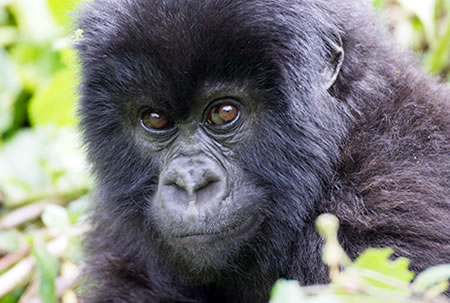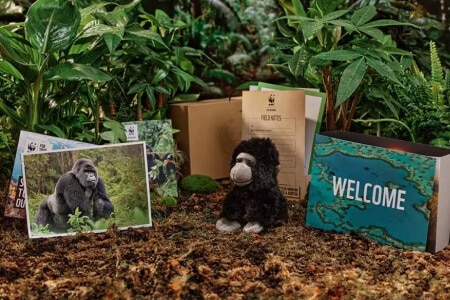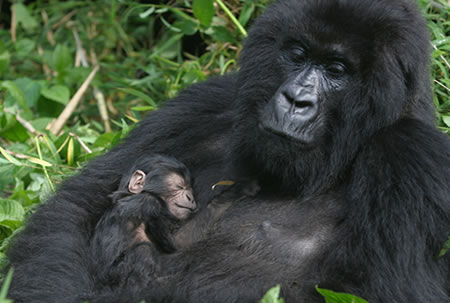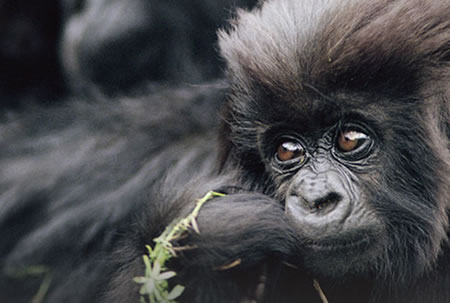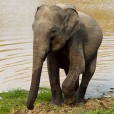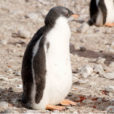Adopt a gorilla and receive
- A cuddly gorilla toy.
- Gift pack with mountain gorilla facts, an adoption certificate, a greetings card, and tips on how to live a greener and more environmentally friendly life.
- Wild-World magazine delivered three times a year – a great read for all ages.
udopt'r choice
Mountain gorillas live in very close-knit communities with up to 30 members in each group. They can climb trees, but prefer to stay on the ground, as they are big and heavy and break all the branches! In each group they have one dominant male leader, though other males may challenge him during his reign. Overall though gorillas are relaxed and laid back creatures. They would only get involved in a conflict situation if they felt their family was being threatened. If they did feel that, you’d better stay out of their way!
udopt it because
- Sadly, there are only 1,063 mountain gorillas left in the wild.
- Your kind donation will help WWF to train and equip anti-poaching patrols whilst working with local governments to ensure conservation laws are enforced to protect their habitat.
- It’s also great as a last-minute gift as the gift certificate can be printed or emailed immediately following payment.
- Adoption programmes start from as little as £5.00 a month.
>> Adopt a Gorilla Today
Adopt a Gorilla Gallery
WWF Adopt an Animal Information
Since 1961 WWF have been advocating and giving a voice to the animal kingdom. Recognised for their work internationally udopt is proud to feature WWF animal adoptions programmes. Adopt and you will receive a gift pack including a cuddly toy (or a personalised book with a Tiger adoption), a certificate plus lots more. You'll also get regular updates throughout the year.
https://wwf.org.uk/UK Registered Charity Number 1081247
Delivery information
By Post :
FREE Delivery Your gift pack will be delivered within the UK FREE of charge. Your package will be sent out within 2 business days, but please allow up to 5 days for delivery.
Last Minute Gift? :
Left it until the last minute? The good news is you can still receive a gift certificate to print or email up to the big day! You will then receive the gift pack within 10 days of ordering!
Did you know?
- Due to their nomadic nature, gorillas build new nests every day our of tree branches and grass.
- Mountain gorillas very rarely drink water, as the plants they eat provide more than enough moisture to keep them hydrated.
- If you ever encounter a gorilla in the wild (which is unlikely!) be sure to stay still and don’t stare at it. Gorillas very rarely attack humans, but if you follow our advice, you should be fine!
- Gorilla’s are highly intelligent creatures, and some that have been kept in captivity have even been taught human sign language.
Our mountain gorilla says…
Hi there, I’m a mountain gorilla, and I’m one of the biggest mammals in the jungle. I love to hang out with my friends and family, but due to poaching and the destruction of my habitat I am now an endangered species. In fact, sadly there’s less than 900 of us left on the planet where once there were many. Please adopt me and help provide funds to train rangers to protect us from poachers, as if any more of us are killed we will disappear from the planet all together. Please help us.


